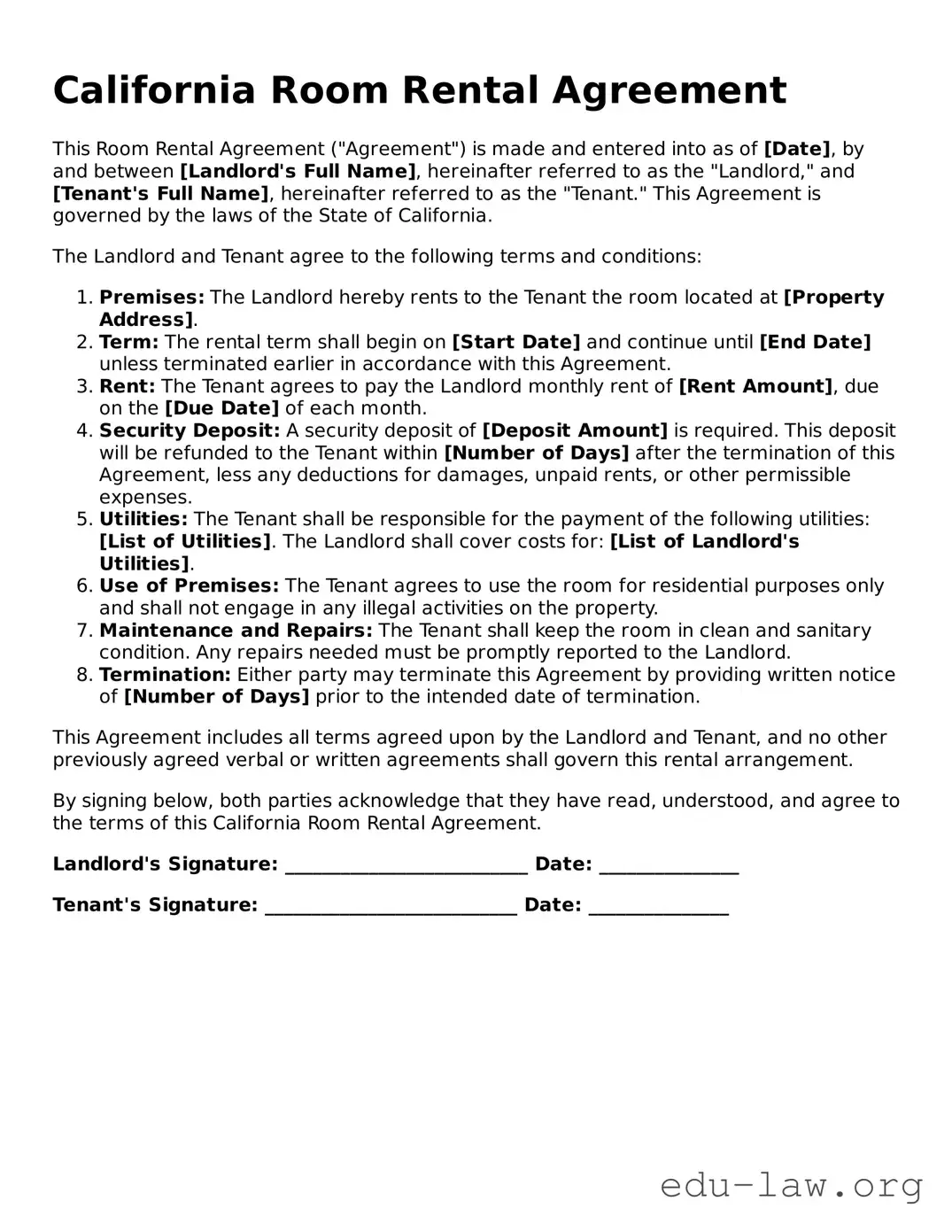What is the California Room Rental Agreement form?
The California Room Rental Agreement form is a legal document that outlines the terms under which a room is rented. This contract typically includes details about the rental period, rent amount, deposit requirements, and responsibilities of both the landlord and tenant.
Who should use the Room Rental Agreement form?
Both landlords and tenants in California should use this form when entering into a rental arrangement. Landlords should ensure the document clearly outlines their expectations and the tenant’s obligations, while tenants should review the agreement carefully to understand their rights and responsibilities.
What are the key components of the Room Rental Agreement?
Key components include the names of the parties, the rental property address, rent amount, due date, payment methods, security deposit details, maintenance responsibilities, rules regarding guests, and conditions for lease termination. Each section ensures clarity and protection for both parties.
Is it necessary to have a written agreement?
Yes, having a written agreement is essential to avoid misunderstandings. A written contract provides proof of the agreed terms and can be referenced in case of disputes. While verbal agreements may be legal, they are difficult to enforce and often lead to complications.
How can changes be made to the Room Rental Agreement?
Changes to the agreement must be made in writing and signed by both parties. This ensures that any modifications are legally recognized and binding. Both tenants and landlords should openly communicate to reach mutual agreement on any changes.
What happens if the tenant or landlord fails to comply with the agreement?
If either party fails to comply with the terms of the agreement, the other party may seek legal remedies. This could include eviction proceedings for tenants or claims for unpaid rent or damages for landlords. Understanding the consequences of non-compliance is crucial for both parties.
Can the Room Rental Agreement be terminated early?
Yes, the agreement can be terminated early, but this typically requires mutual consent or adherence to specific conditions outlined in the contract. Tenants should look for clauses regarding early termination fees and notice periods to avoid penalties.
Where can I obtain a Room Rental Agreement form?
The Room Rental Agreement form can be obtained from various sources, including legal websites, real estate offices, and local housing authorities. Ensure that the form is compliant with California laws and adequately suits your specific rental situation.
